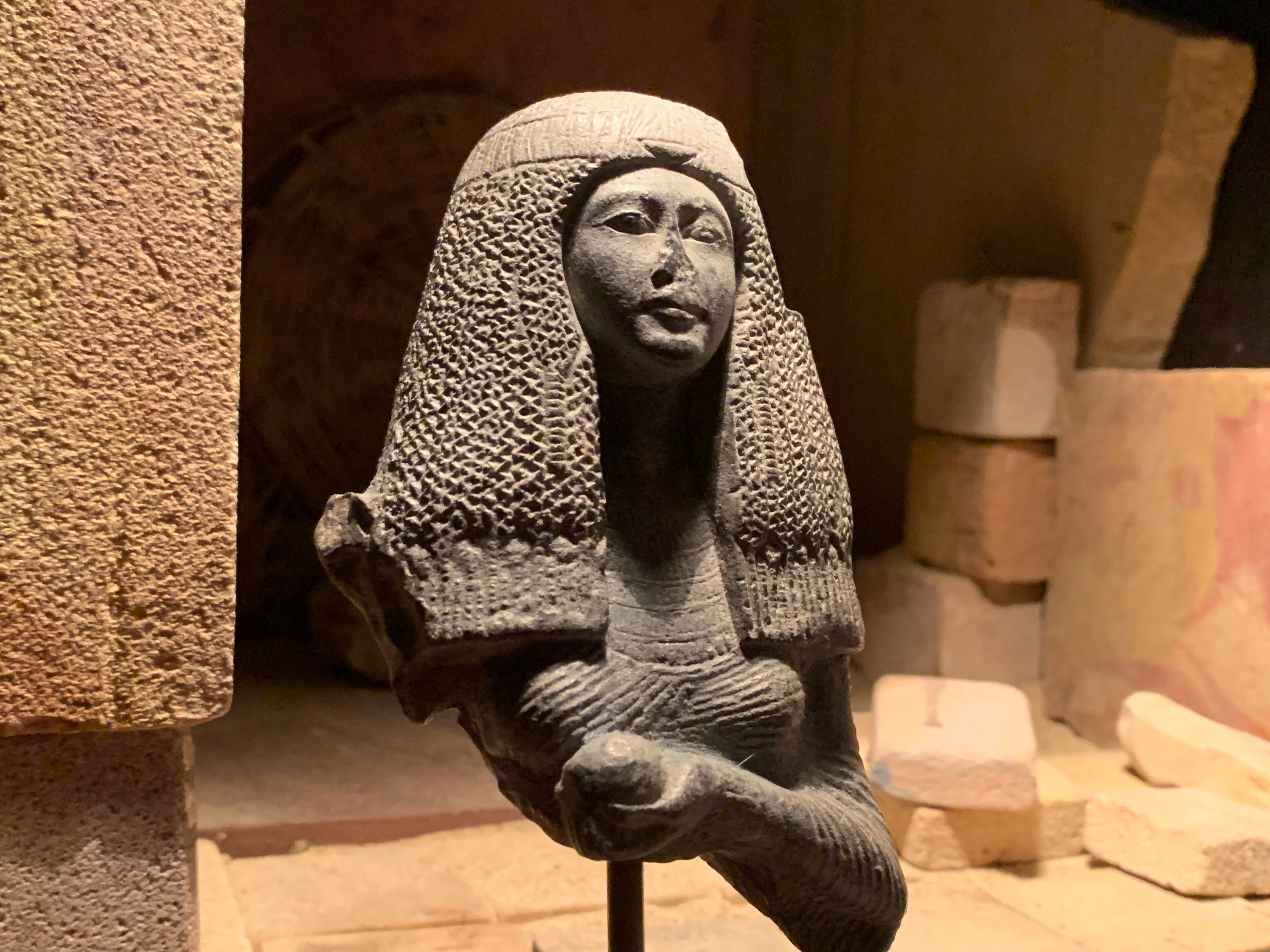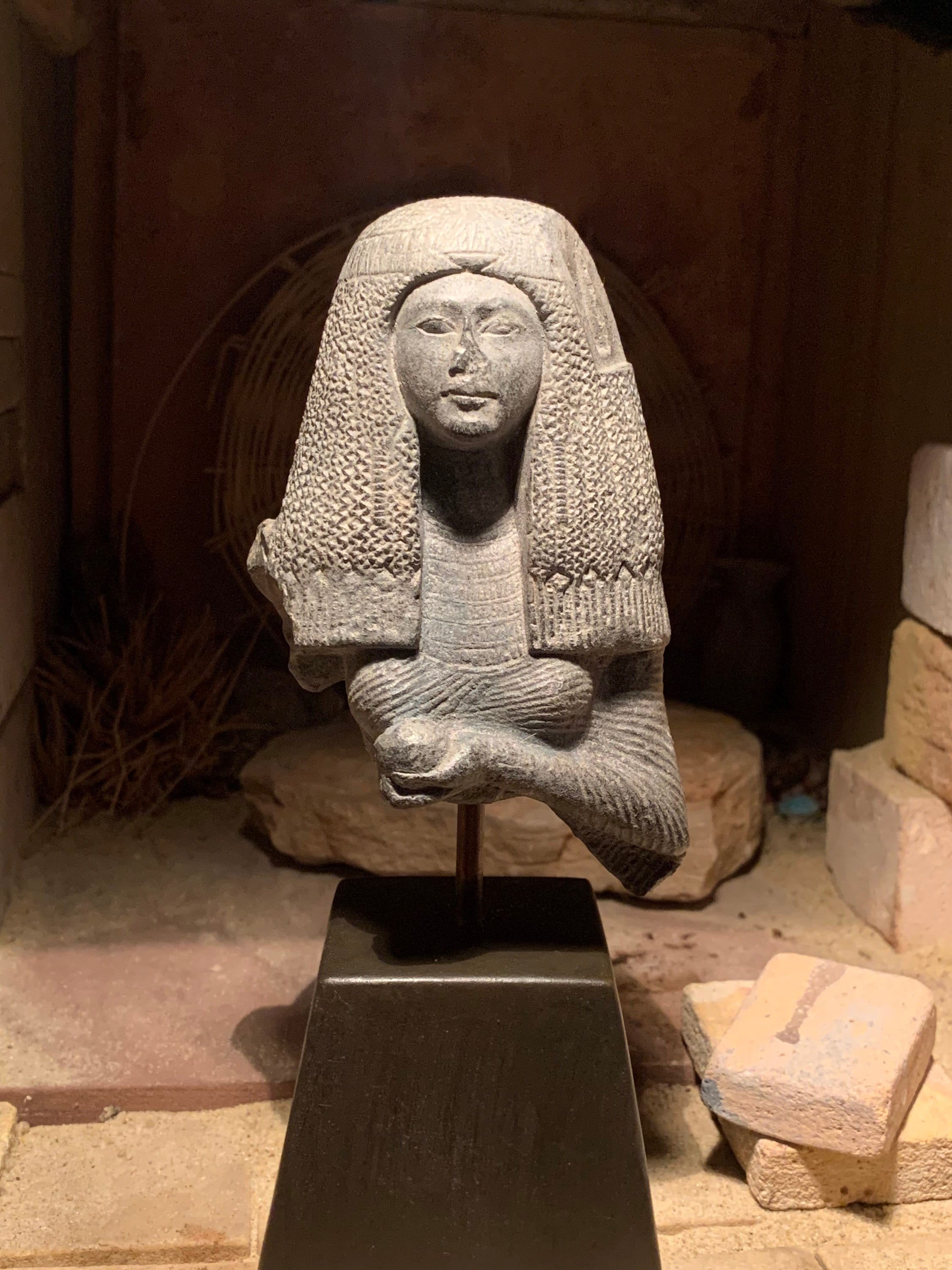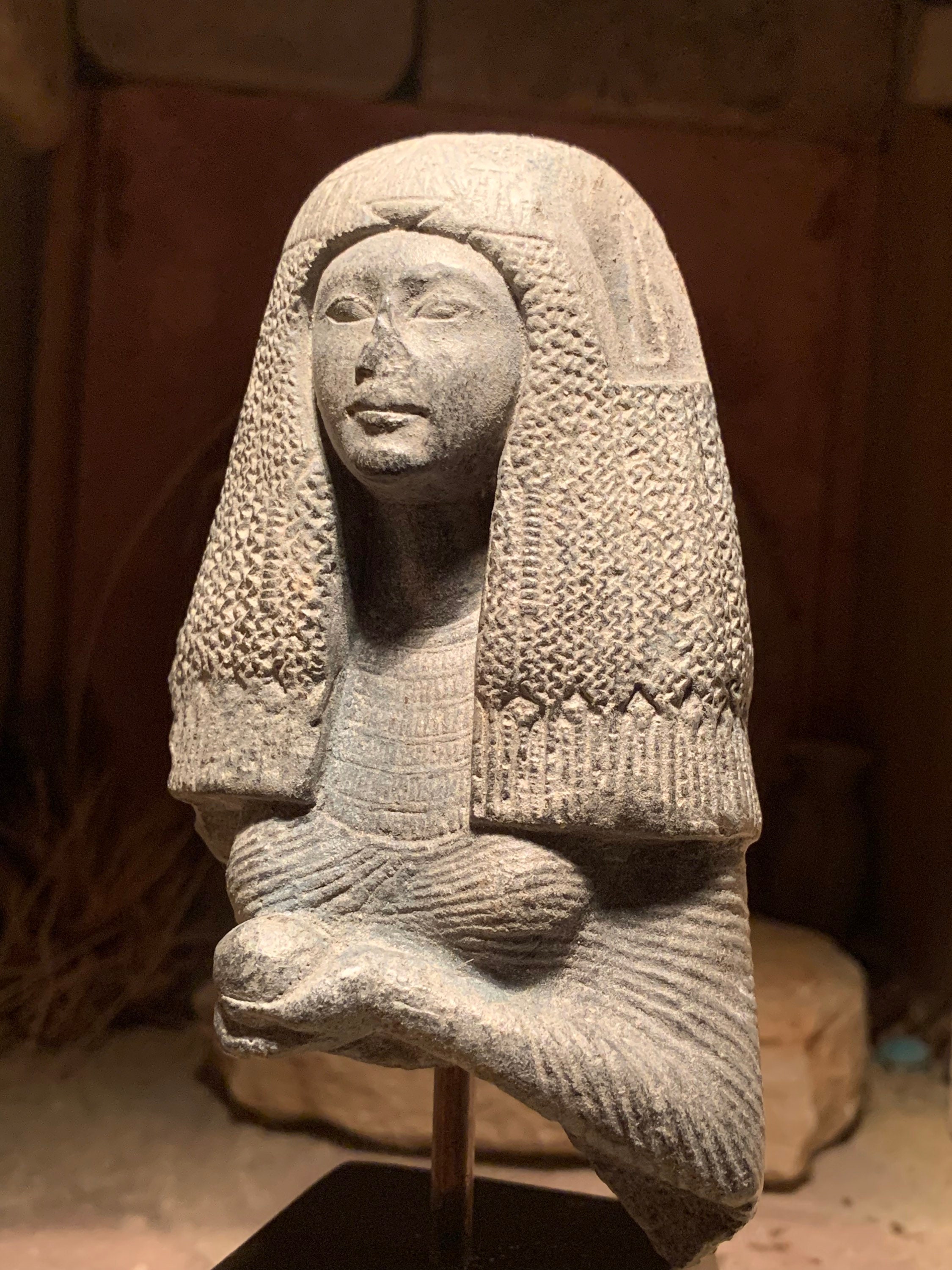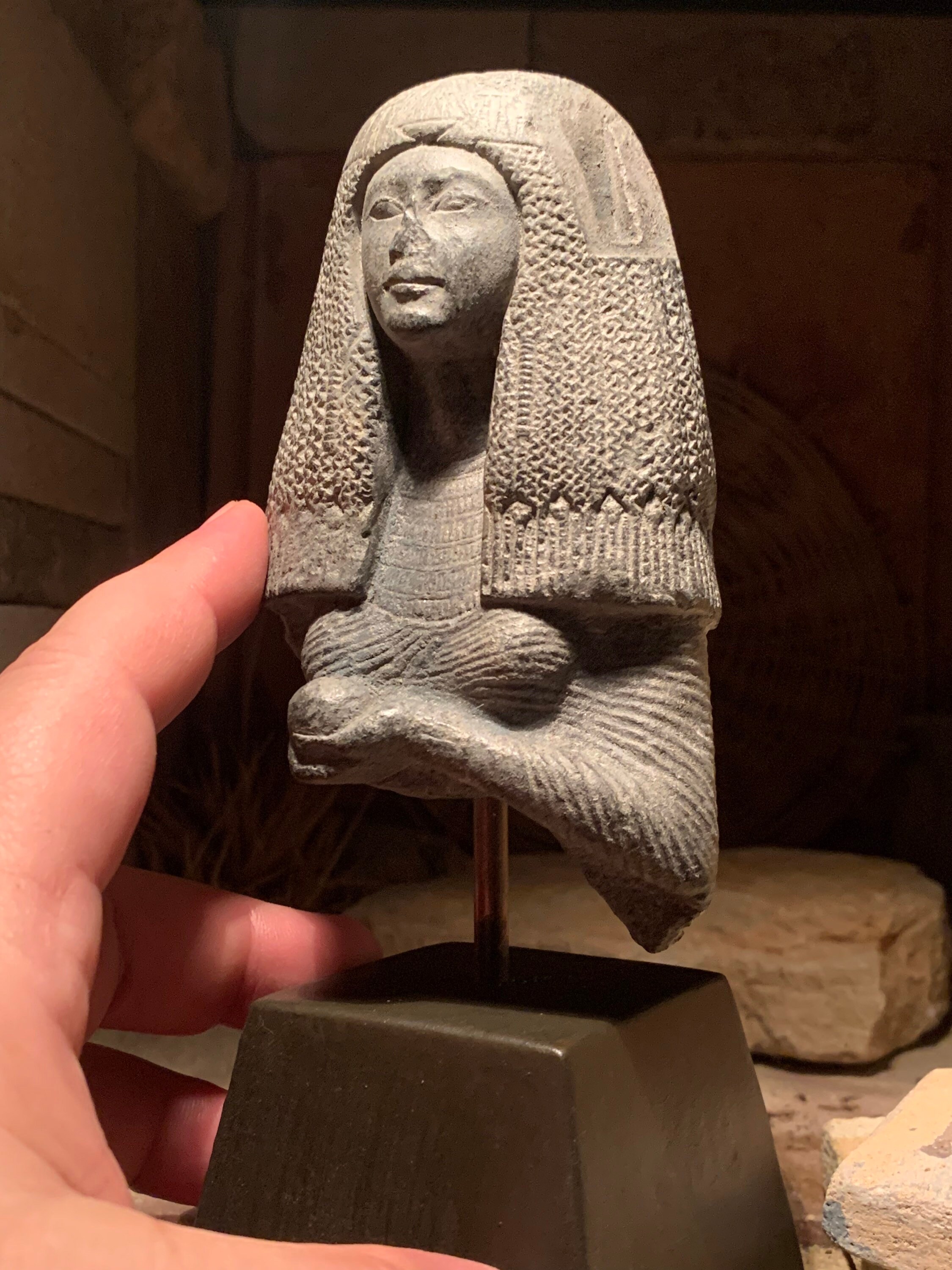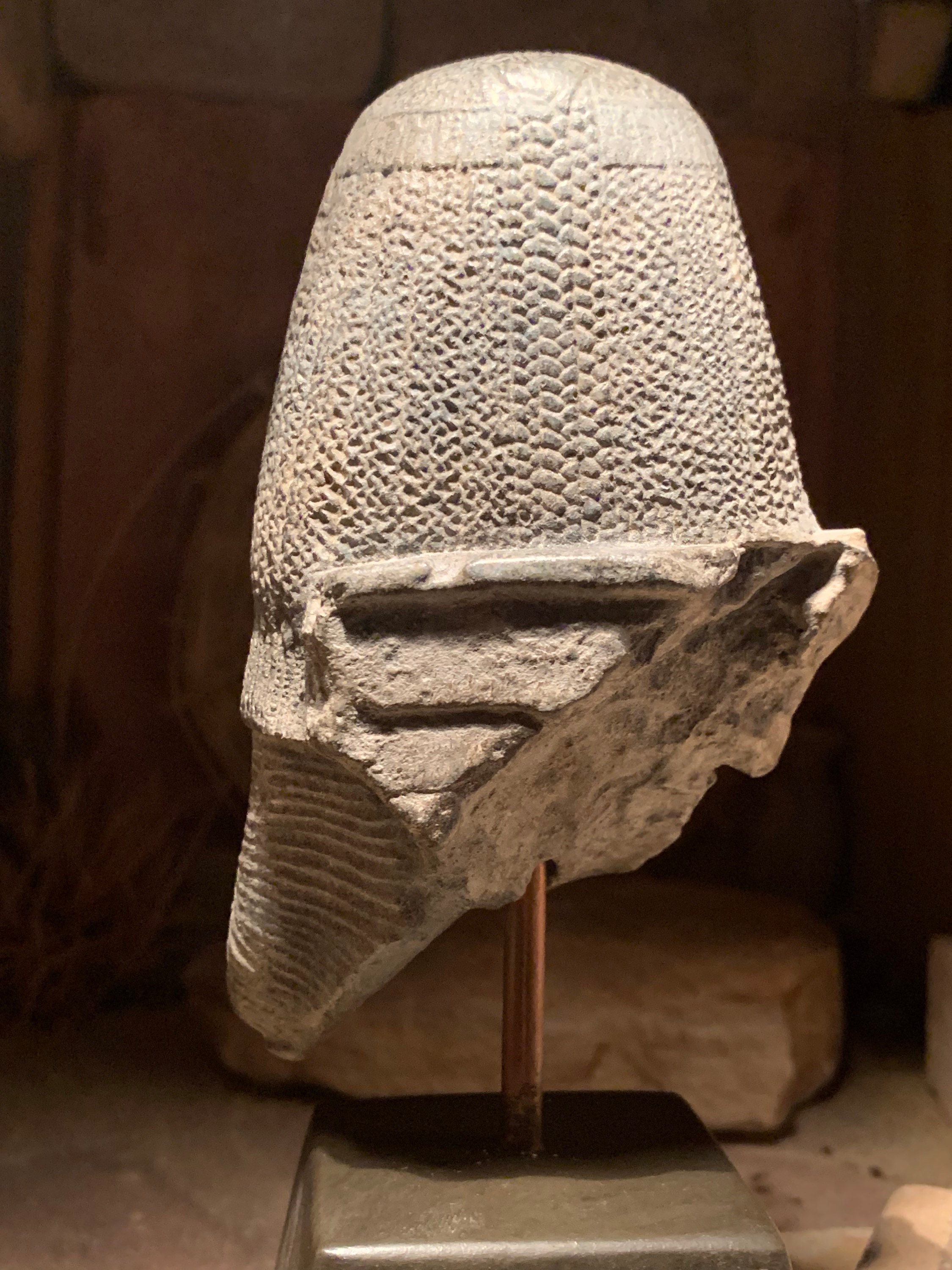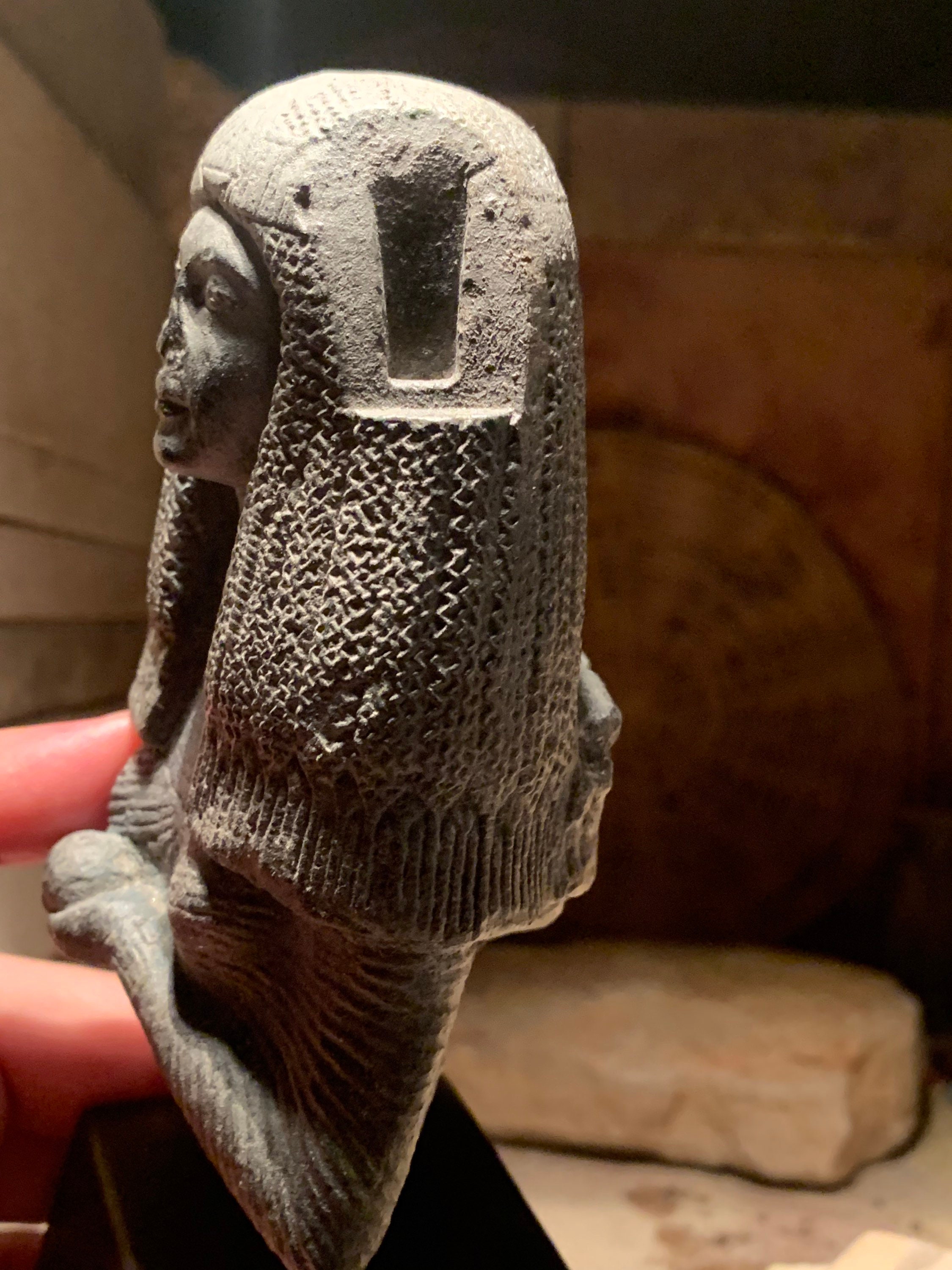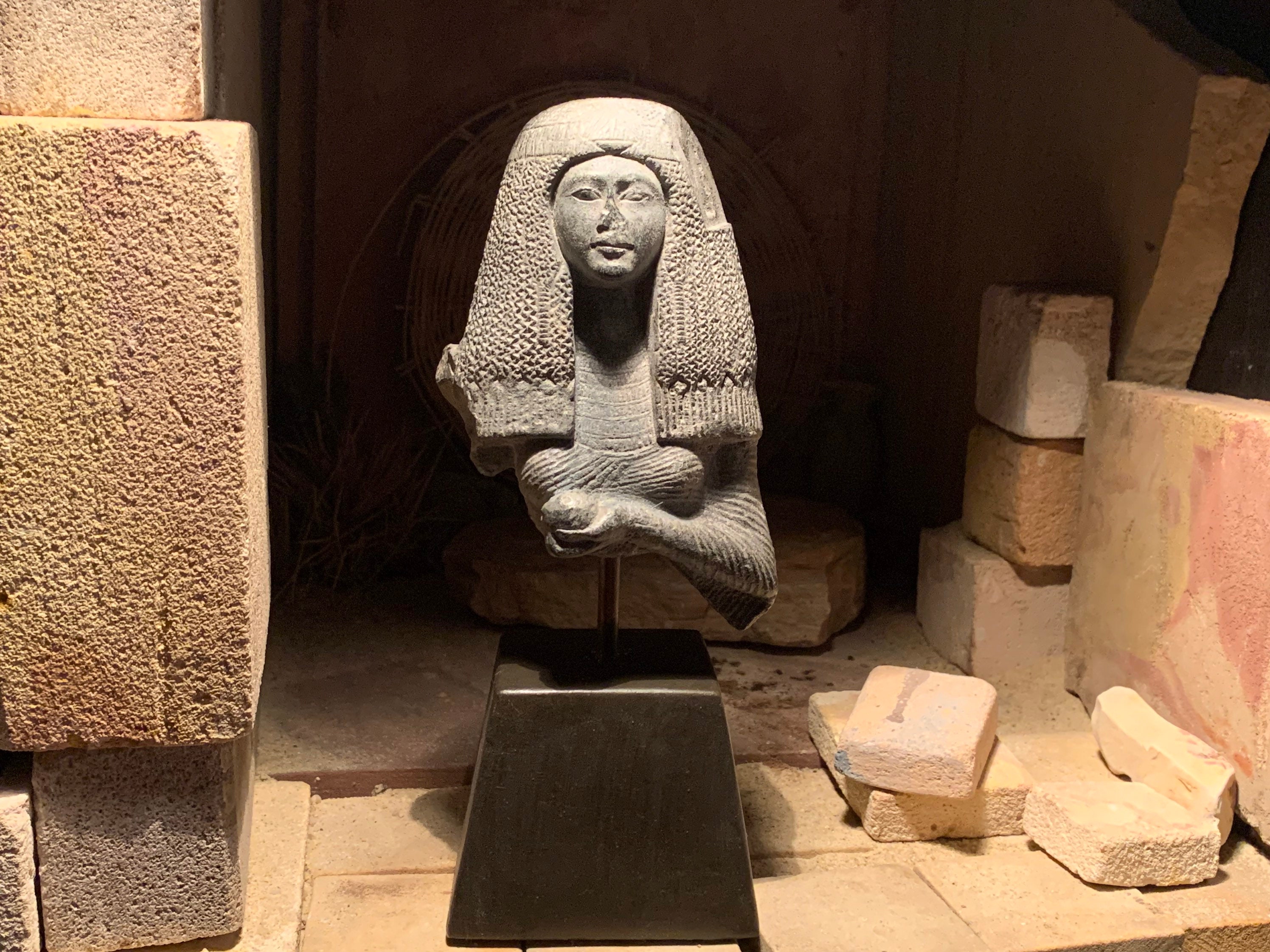Ancient Egyptian statue replica - Lady with Mandrake fruit
$104.98
Lady with Mandrake fruit
Dimensions :-
Total height with stand - 19.5 cm / 7-1/2 inches
Stand base - 7x7 cm / 2-3/4 x 2-3/4 inches
Made of a limestone and quartzite composition stone she has been given a slate black patina with touches of ochre. Mounted on an easily removable, felt based stand.
* Combined postage is offered if you would like to add other items to your order. Please ask.
On offer here is a beautiful replica statue of post-Amarna date. This is the most detail dense statue fragment in the collection and is a prime example of fractured beauty.
This is another statue that has a story to tell if only she could speak.
Stylistically she fits neatly into the post-Amarna era (1336-1292 B.C.E) and more than likely lived during the reign of Tutankhamun. No identification of name is possible but she was very high ranking as the quality of the sculpture is of royal workshop quality. From the pleats of the dress to the hundreds and hundreds of individual grooves that make up the texture of a perfect wig, it is immediately obvious we are beholding an important lady.
The late 18th dynasty female statue styles were typified by the elaborate pleated garments, full and wide tressed wigs, slender hands and fine fingers. A prominent lotus flower can be seen incised on the forehead portion of the wig.
The most telling detail is the face. Although battered, the heart shaped face with slightly bow lips recalls the famous Amarna princess with sidelock and some of the early portraits of Tutankhamun at the time of his ascension to the throne.
Compare the so called ‘coronation statue’ of Tutankhamun and similar facial contours can be traced.
If you would like to explore this subject further, a grey stone statue in the Metropolitan museum shows Tutankhamun as the god Amun and his nose has also been lost in antiquity, always the first thing to go if a statue should fall face first in an ancient earthquake or civil upheaval.
The face is very similar to this young lady and it is with little doubt that she was a contemporary of Tutankhamun as royal sculptural styles were mimicked by the noble classes for their own statues.
One of the interesting features of this piece is the evidence of ancient repair that was bestowed upon this statue.
Rather than re-carve an entirely new statue, a sculptor cut out the damage to create a neat socket for the attachment of a replacement stone portion. A tenon. This would have been cemented into place and carved with matching details.
This was not an uncommon practice and this statue gives us a glimpse of the ancient statue repair man at work.
She holds a mandrake fruit in her only surviving cupped hand. A hint of the position of the other arm can be seen and she would have sat next to her husband with arm stretched out to clasp the waist. A portion of the high backed chair she sat upon, can be seen on the back.
‘The seated couple’ was a standard type of statue that was very popular during this period.
The mandrake fruit was in life, a yellow fruit but it was the root extracts of this tree that were mixed with alcohol to create a special drink known as ‘Sa’ - the water of life. A potent tonic that would bring and maintain good health and long life.
It was thus thought to be a divine fruit and those who could, kept a mandrake fruit in a prominent position in the home. Fire flies would also be attracted to the fruit which further enhanced it’s magical qualities at night. This fruit had special meaning for the lady holding it here.
Shipping from Australia
Processing time
3-5 business days
Estimated shipping times
- North America : 1 - 3 weeks
- Europe : 1 - 3 weeks
- Australia, New Zealand and Oceania : 1 - 2 weeks
- Asia Pacific : 1 - 3 weeks
- Latin America and the Caribbean : 1 - 3 weeks
- North Africa and the Middle East : 1 - 3 weeks
- Sub-Saharan Africa : 1 - 3 weeks
I'll do my best to meet these shipping estimates, but can't guarantee them. Actual delivery time will depend on the shipping method you choose.
Customs and import taxes
Buyers are responsible for any customs and import taxes that may apply. I'm not responsible for delays due to customs.
Payment Options
Returns & Exchanges
I gladly accept returns and cancellations
Just contact me within: 5 days of delivery
Ship items back to me within: 14 days of delivery
Conditions of return
Buyers are responsible for return shipping costs. If the item is not returned in its original condition, the buyer is responsible for any loss in value.

